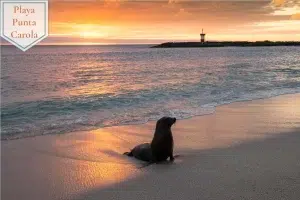Fernandina Island is the third-largest and youngest island in the Galapagos. It is a layer of the active volcano, which last erupted in August 2007. The island was formed by the Galapagos hotspot. The southern flank of the volcano experienced an eruption that generated lava flows, which gradually diminished over time. It is the youngest and westernmost island in the archipelago. Its name was given in honor of King Ferdinand of Spain, who sponsored the voyage of Christopher Columbus. On February 14, 1825, while anchored in Banks Bay, Captain Benjamin Morrell recorded one of the largest eruptions of Fernandina Volcano in Galapagos history. His ship was secured, and his account of the event was preserved.
Fernandina has an area of 642 km2 and an altitude of 1,476 meters, with a caldera approximately 6.5 km wide. The caldera collapsed in 1968, when parts of the caldera floor fell 350 meters. A small lake has intermittently occupied the floor of the northern caldera, most recently in 1988.
Due to recent volcanic activity, the island is quite lifeless and has a rather gray atmosphere. For safety reasons, visitors to Fernandina Island will only be accompanied to see the crater’s flanks.
Punta Espinoza, located on the northeast coast of the island, is a narrow strip of land where hundreds of marine iguanas congregate in large groups on black lava rocks. This island is home to the famous flightless cormorant, as well as penguins, pelicans and sea lions. Two types of lava flows can be observed. Mangroves are also abundant on the island.


















